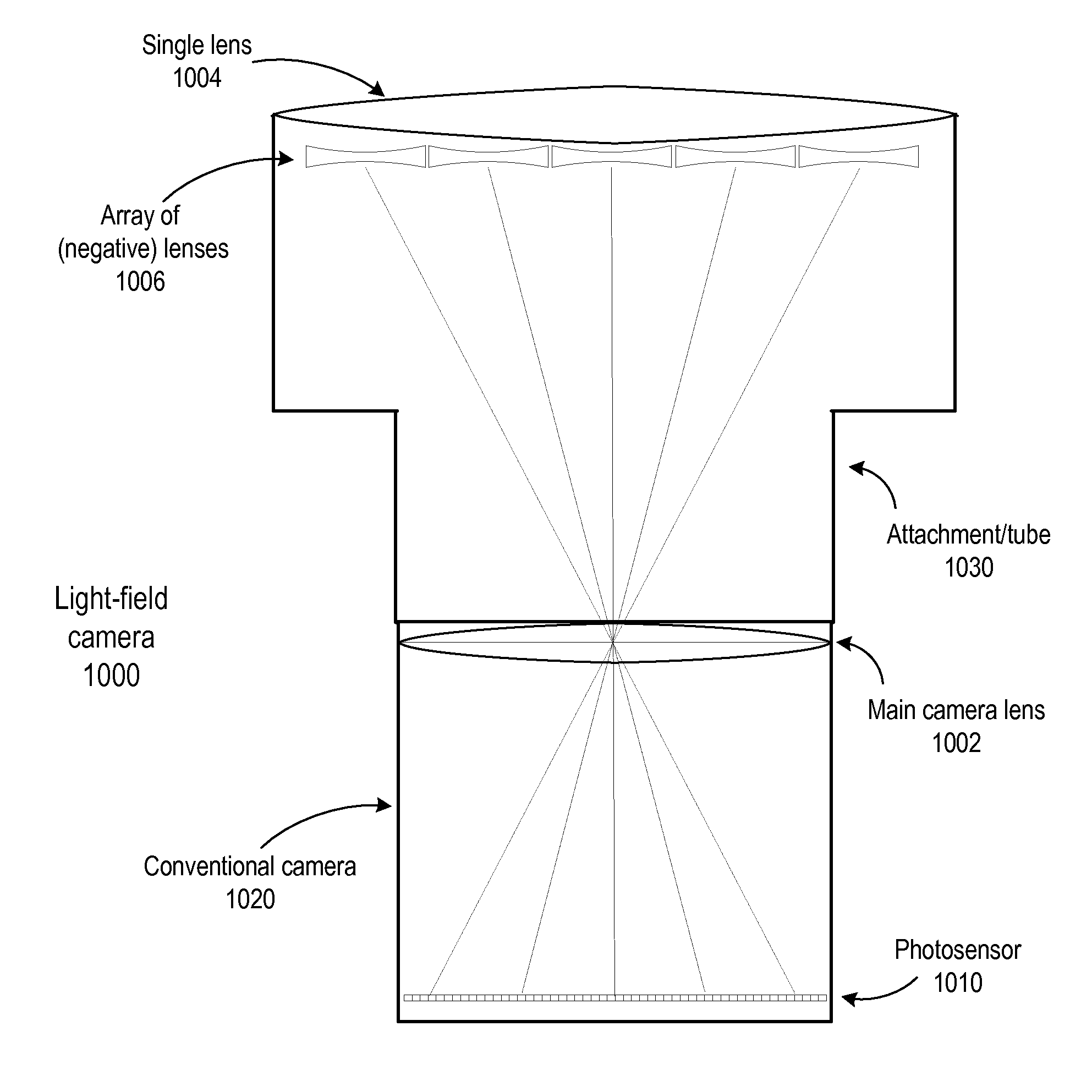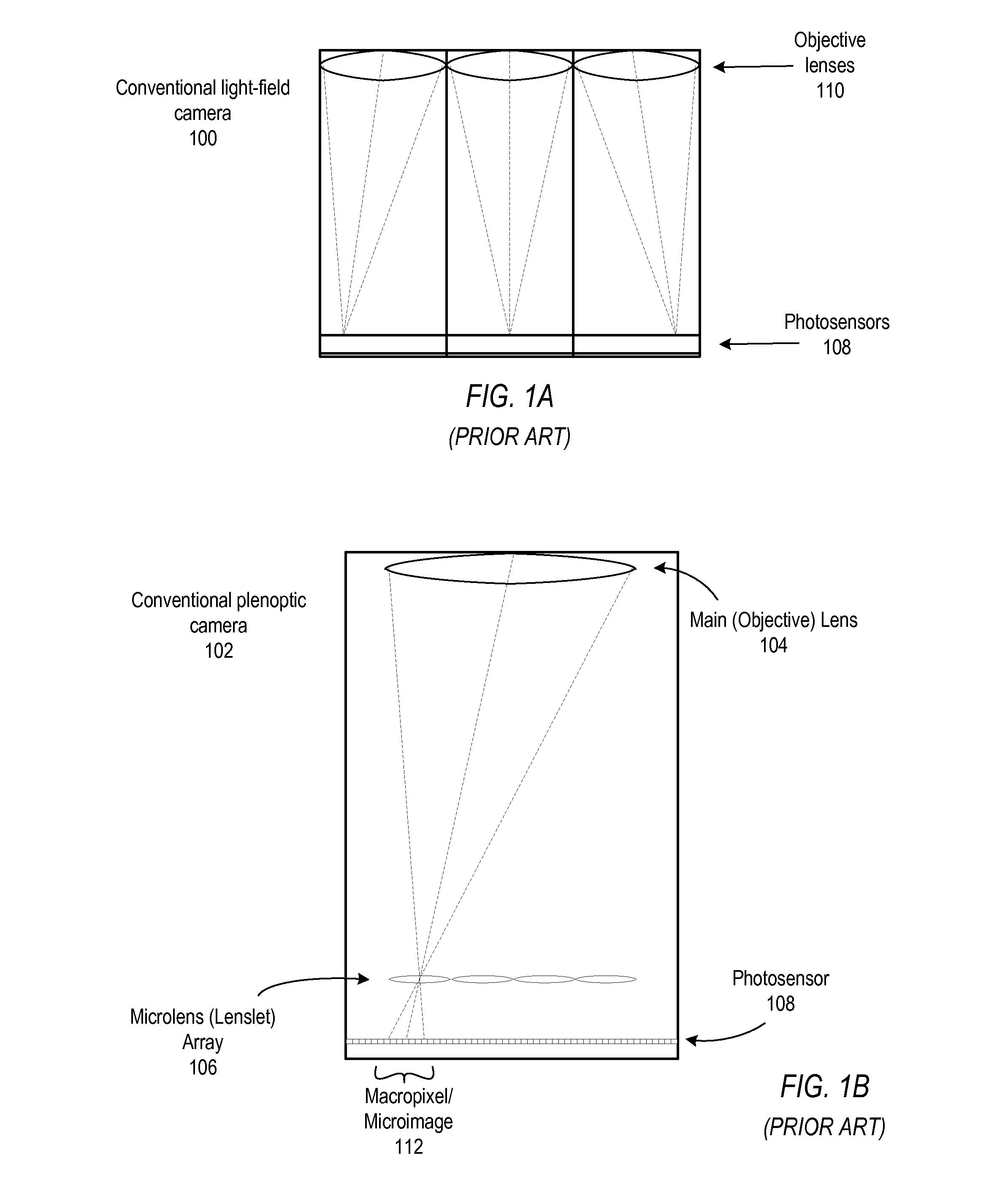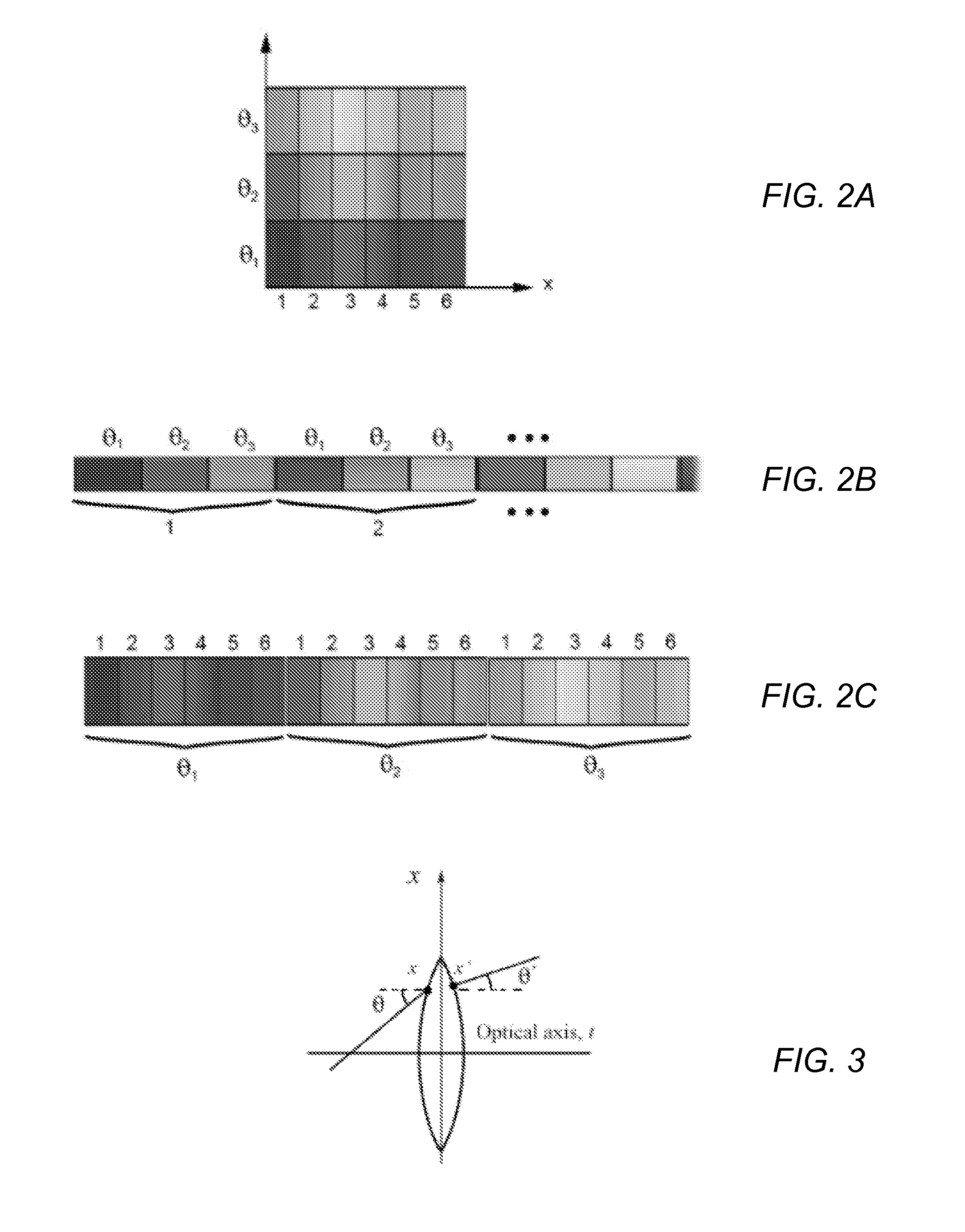Methods and apparatus for light-field imaging
a technology of light-field imaging and light-field imaging, which is applied in the field of light-field imaging methods and apparatuses, can solve the problems of insufficient light-field information, insufficient light-field information, and insufficient light-field information of conventional cameras, so as to achieve low angular resolution, minimal loss of quality, and high spatial resolution
- Summary
- Abstract
- Description
- Claims
- Application Information
AI Technical Summary
Benefits of technology
Problems solved by technology
Method used
Image
Examples
Embodiment Construction
[0054]Various embodiments of methods and apparatus for integral or light-field imaging are described. In embodiments, integral or light-field photography may be approached from the perspective of radiance analysis in geometrical optics. This provides a new way of looking at integral photography and the associated light-field rendering. Several embodiments of integral or light-field camera designs are provided that produce higher spatial resolution than conventional plenoptic camera designs such as camera 102 of FIG. 1B, while trading-off the light-field's angular sampling density. However, in embodiments, this lower angular resolution in the input may be compensated for by inserting data synthesized by view interpolation of the measured light-field. In one embodiment, three-view morphing may be used to interpolate the missing angular samples of radiance. Such interpolated light-fields generated from sparsely sampled radiance are generally good enough to produce synthetic aperture ef...
PUM
 Login to View More
Login to View More Abstract
Description
Claims
Application Information
 Login to View More
Login to View More - R&D
- Intellectual Property
- Life Sciences
- Materials
- Tech Scout
- Unparalleled Data Quality
- Higher Quality Content
- 60% Fewer Hallucinations
Browse by: Latest US Patents, China's latest patents, Technical Efficacy Thesaurus, Application Domain, Technology Topic, Popular Technical Reports.
© 2025 PatSnap. All rights reserved.Legal|Privacy policy|Modern Slavery Act Transparency Statement|Sitemap|About US| Contact US: help@patsnap.com



